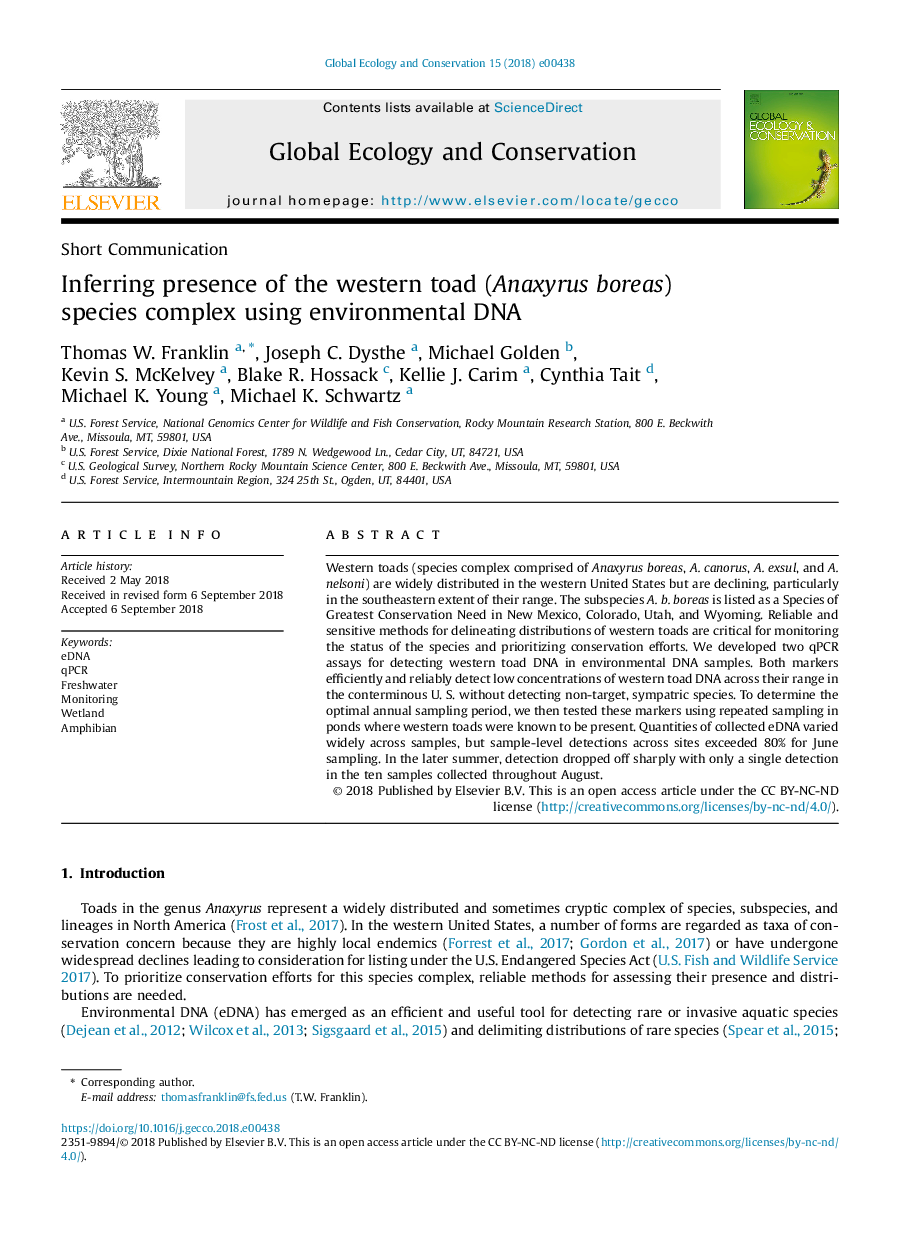| Article ID | Journal | Published Year | Pages | File Type |
|---|---|---|---|---|
| 10110088 | Global Ecology and Conservation | 2018 | 9 Pages |
Abstract
Western toads (species complex comprised of Anaxyrus boreas, A. canorus, A. exsul, and A. nelsoni) are widely distributed in the western United States but are declining, particularly in the southeastern extent of their range. The subspecies A. b. boreas is listed as a Species of Greatest Conservation Need in New Mexico, Colorado, Utah, and Wyoming. Reliable and sensitive methods for delineating distributions of western toads are critical for monitoring the status of the species and prioritizing conservation efforts. We developed two qPCR assays for detecting western toad DNA in environmental DNA samples. Both markers efficiently and reliably detect low concentrations of western toad DNA across their range in the conterminous U. S. without detecting non-target, sympatric species. To determine the optimal annual sampling period, we then tested these markers using repeated sampling in ponds where western toads were known to be present. Quantities of collected eDNA varied widely across samples, but sample-level detections across sites exceeded 80% for June sampling. In the later summer, detection dropped off sharply with only a single detection in the ten samples collected throughout August.
Related Topics
Life Sciences
Agricultural and Biological Sciences
Ecology, Evolution, Behavior and Systematics
Authors
Thomas W. Franklin, Joseph C. Dysthe, Michael Golden, Kevin S. McKelvey, Blake R. Hossack, Kellie J. Carim, Cynthia Tait, Michael K. Young, Michael K. Schwartz,
